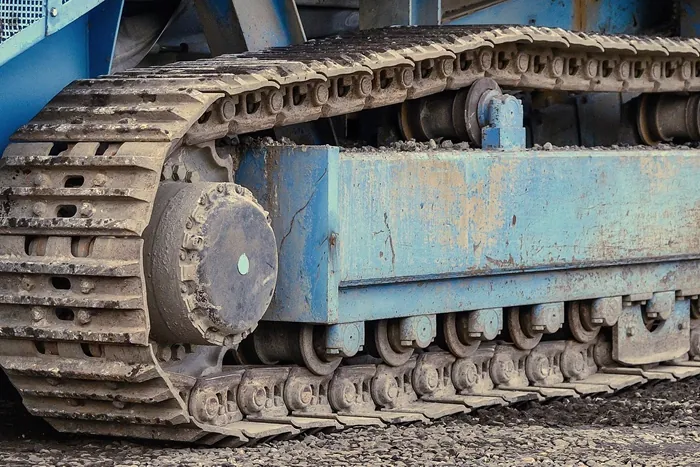Handling Excavator Track Plate Detachment and Prevention Strategies

excavator track plate detachment is a common issue, especially in older machines operated by less experienced operators. Understanding how to reassemble the chain after detachment and minimize occurrences is essential for safe and efficient operation.
Steps for Reassembling the track chain
Notify the Construction Team Inform the team that there are walking issues, requiring a halt in work for necessary adjustments.
Assess the Environment Move the excavator to a spacious, level, and solid area. Clear any debris, such as soil piles, rocks, or branches, using the excavator's bucket to create a safe workspace.
Evaluate the Extent of Detachment Determine if the detachment resulted from a broken component or other faults, and notify repair personnel if needed. Check for debris within the track assembly, as excessive material often leads to detachment during turns, especially in poorly maintained machines.
Prepare the Track for Assembly Use a wrench or socket to remove the grease fitting from the track. Lift the detached side with the excavator bucket while rotating the track to expel any remaining grease. Avoid pressing the drive wheel without cleaning it first to prevent damage.
Methods for Track Assembly
Method 1: Manual Alignment
Align the chain's pivot joints to the midpoint and tap them out to allow the Track Plates to lay flat. Position the excavator directly above the track.
Use a metal rod to guide the track plates into place, starting from the drive wheel. Lift the track plate and rotate it forward while someone operates the tracks from the cabin. Once aligned with the idler, you can insert an object to help connect the track plates, then secure it with the pivot pin.
Method 2: Drive Wheel Engagement
When one side of the track is attached, please clear the surrounding debris first. Could you align the drive wheel with the upper track and lift it using the bucket, ensuring proper alignment?
Carefully lower the track onto the drive wheel, using a metal rod to adjust as needed. Once the track is aligned with both the drive and idler wheels, rotate the track and apply grease to finalize the assembly.
Prevention Strategies
To reduce the likelihood of track plate detachment, consider the following adjustments based on working conditions:
Hard, Flat Surfaces (e.g., concrete)
Increase track tension to prevent excessive wear on the support rollers.
Gravel Surfaces
Slightly loosen the track to mitigate wear from uneven terrain.
Soft Ground
Loosen the track to enhance surface contact, reducing the chance of slipping.
Regular Tension Checks
Ensure both sides of the track are evenly tensioned to prevent misalignment during operation. Maintain a gap of 3-4 cm between the bottom of the track and the support rollers.
Conclusion
Proper handling and assembly of excavator track plates are vital for maintaining operational efficiency and safety. By understanding the steps for reassembling detached tracks and implementing proactive measures based on working conditions, operators can significantly reduce the risk of detachment. Regular maintenance, proper tension adjustments, and a keen awareness of the working environment will contribute to smoother operations and prolong the life of the tracks, ensuring that excavators perform optimally in various conditions.
Why Choose SAIVS™ as Your Supplier?
Committed to innovation and customer needs, SAIVS specializes in high-quality machinery components for diverse industries like construction, mining, and agriculture. They offer a wide range of parts, including undercarriage components for popular brands, ensuring optimal performance and durability. values customer satisfaction, providing competitive prices, fast shipping, and exceptional service to keep your operations running smoothly.